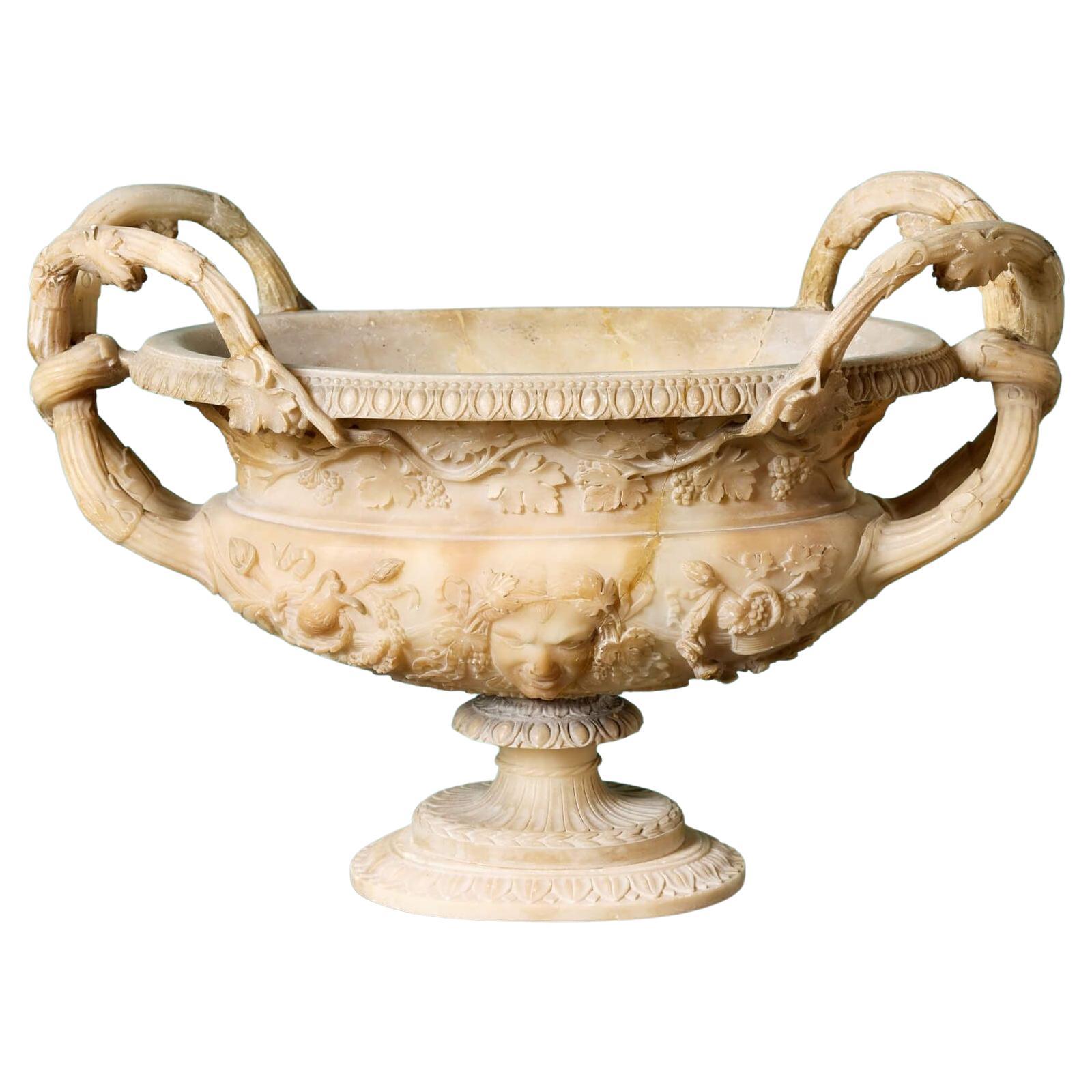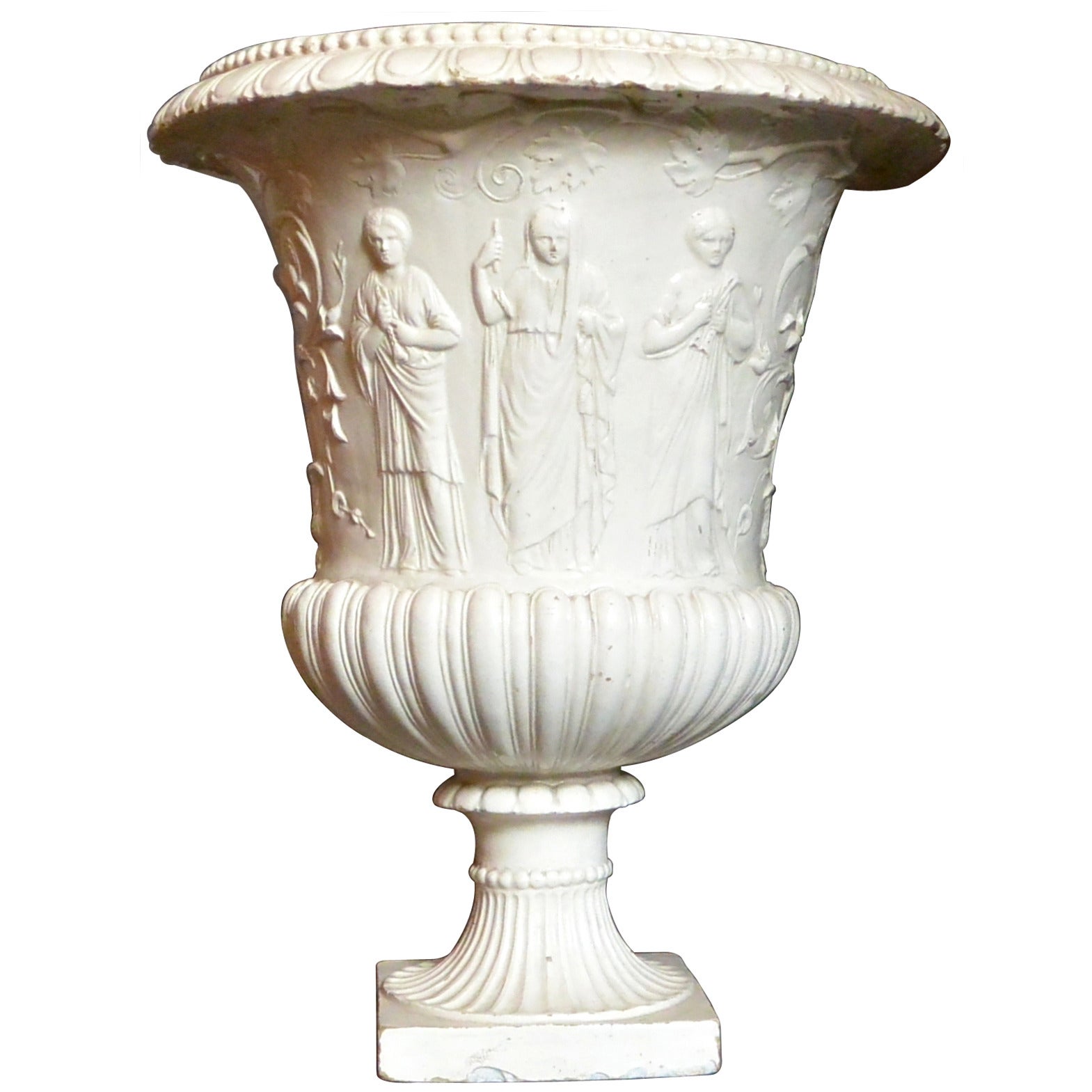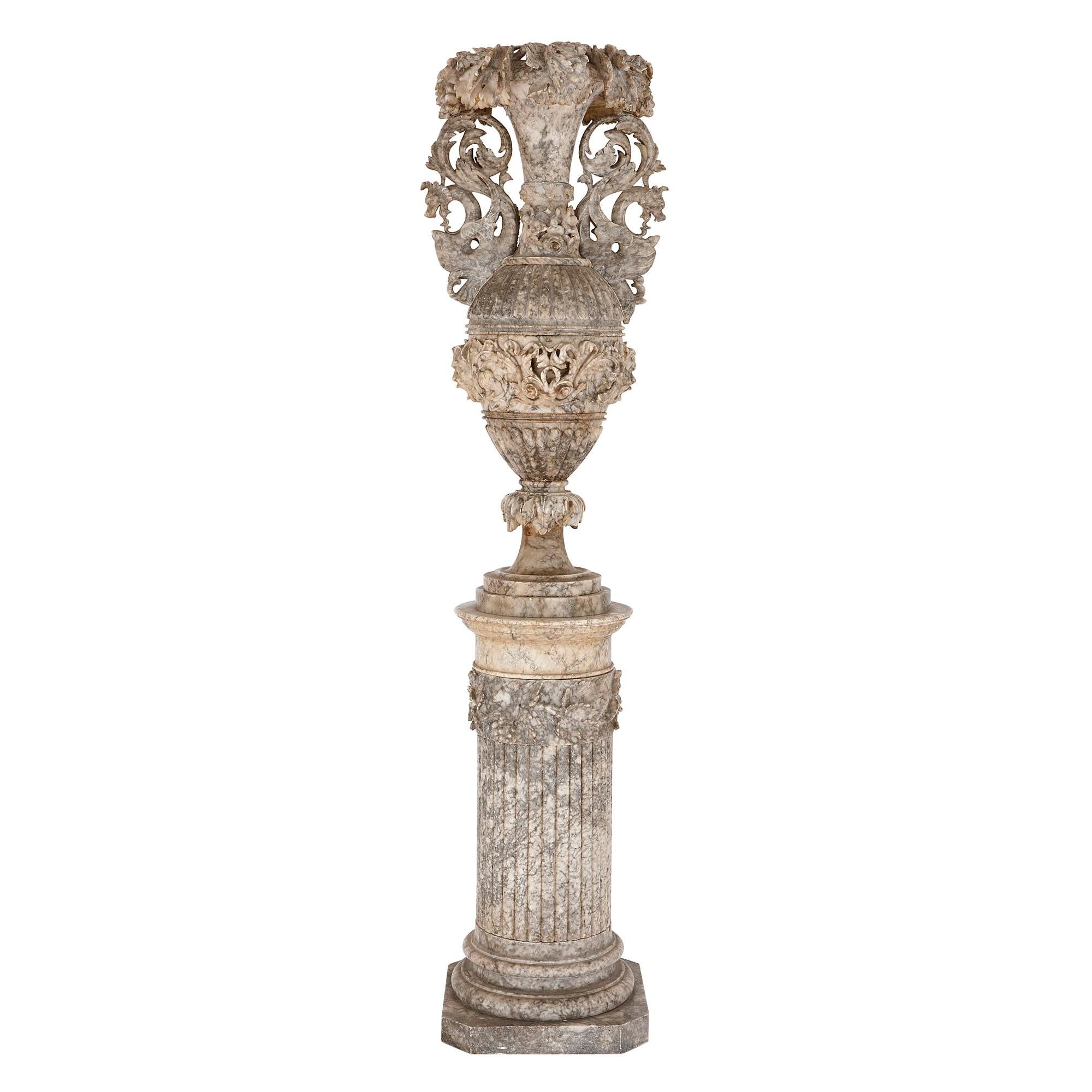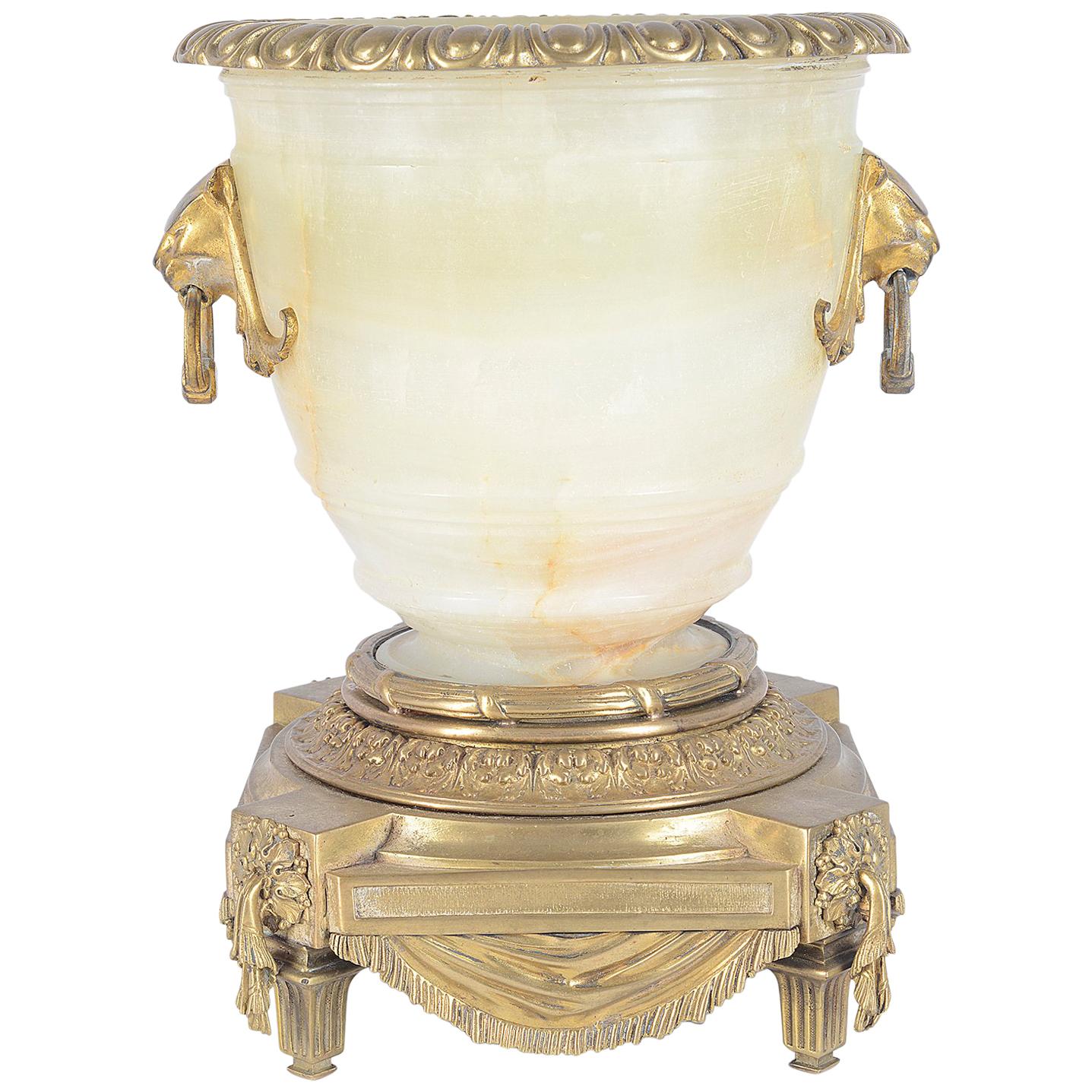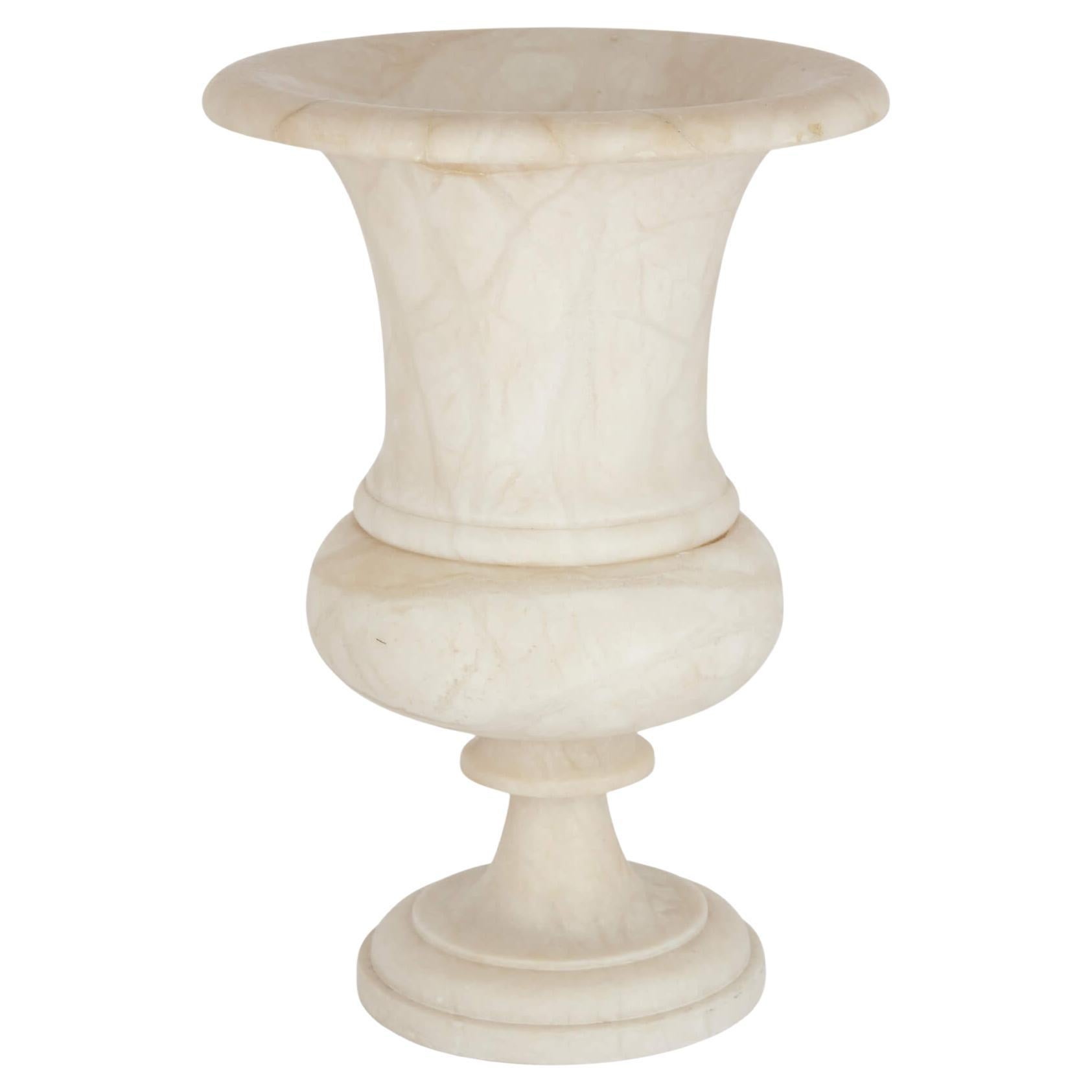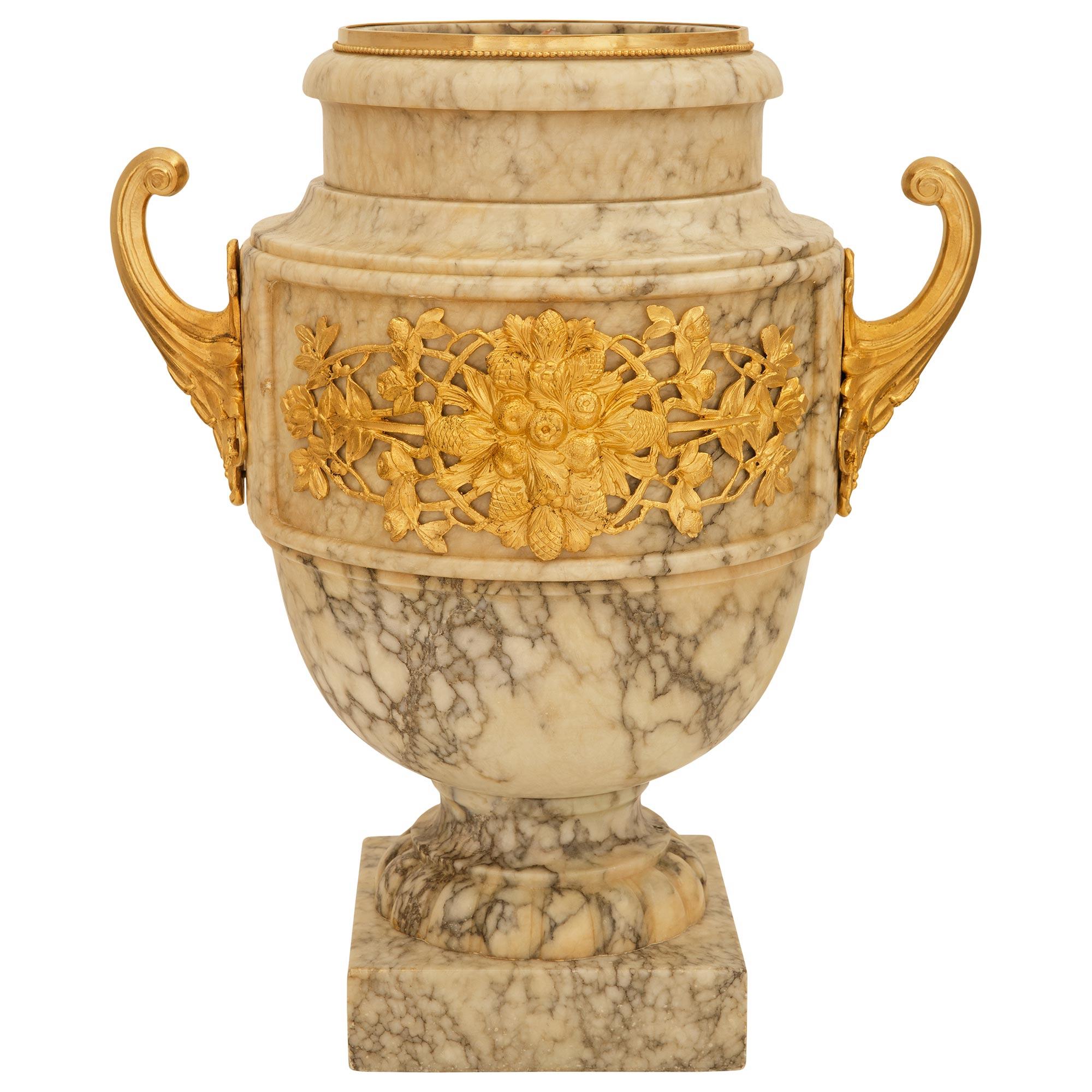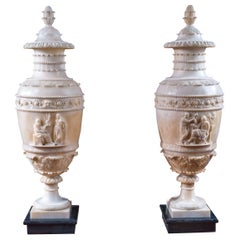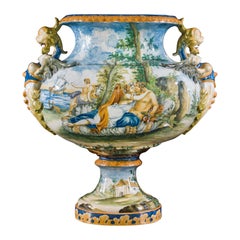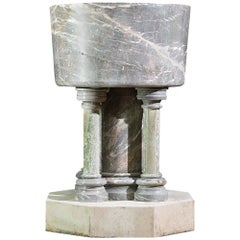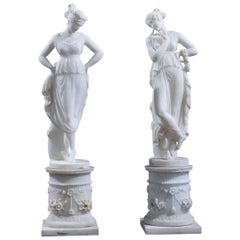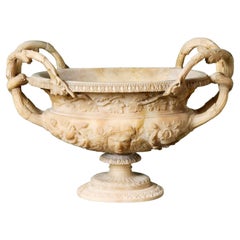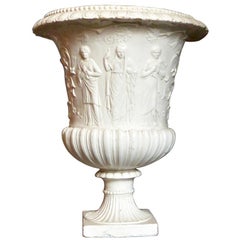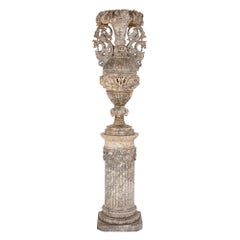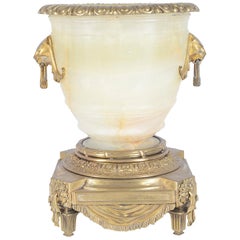Items Similar to Large 18th Century Alabaster Copy of the Medici Vase
Want more images or videos?
Request additional images or videos from the seller
1 of 10
Large 18th Century Alabaster Copy of the Medici Vase
$7,355.12
£5,400
€6,329.32
CA$10,293.62
A$11,286.14
CHF 5,893.53
MX$135,814.51
NOK 74,278.59
SEK 69,840.98
DKK 47,268.27
About the Item
A very fine 18th century alabaster copy of the Medici Vase, after the antique. Almost certainly made in Italy for a wealthy Grand Tourist and a faithful copy of one of the most renowned Roman artefacts from Italy.
The origins of the Medici Vase are uncertain, the first record of the vase being in an inventory of the Villa Medici in Rome in 1598. In 1780, it was moved to the Uffizi Gallery in Florence.
It is particularly significant as it is the only extant Roman krater to not have a Dionysian theme, although the subject remains unclear. It depicts a statue of Apollo Lyricine, who was later restored mistakenly as Diana, with a bare-breasted woman at the foot of the statue, while other figures gaze solemnly towards this scene.
The narrative scene is bordered by a decoration of vine shoots and leaves to the upper portion, whilst the lower portion has phytomorphic, acanthine decoration also carved in low relief. The original vase would have once been brightly decorated, and highlighted in gold.
This version is a good size, and of exceptional quality.
Italian, c.1770
- Dimensions:Height: 21.26 in (54 cm)Width: 16.15 in (41 cm)Depth: 16.15 in (41 cm)
- Style:Neoclassical (Of the Period)
- Materials and Techniques:
- Place of Origin:
- Period:
- Date of Manufacture:c.1770
- Condition:Wear consistent with age and use.
- Seller Location:London, GB
- Reference Number:Seller: 166981stDibs: LU1603242585092
About the Seller
No Reviews Yet
Vetted Professional Seller
Every seller passes strict standards for authenticity and reliability
Established in 1989
1stDibs seller since 2015
47 sales on 1stDibs
Typical response time: 4 hours
- ShippingRetrieving quote...Shipping from: London, United Kingdom
- Return Policy
Authenticity Guarantee
In the unlikely event there’s an issue with an item’s authenticity, contact us within 1 year for a full refund. DetailsMoney-Back Guarantee
If your item is not as described, is damaged in transit, or does not arrive, contact us within 7 days for a full refund. Details24-Hour Cancellation
You have a 24-hour grace period in which to reconsider your purchase, with no questions asked.Vetted Professional Sellers
Our world-class sellers must adhere to strict standards for service and quality, maintaining the integrity of our listings.Price-Match Guarantee
If you find that a seller listed the same item for a lower price elsewhere, we’ll match it.Trusted Global Delivery
Our best-in-class carrier network provides specialized shipping options worldwide, including custom delivery.More From This Seller
View AllPair of Exceptional Alabaster Lorenzo Bartolini Urns
Located in London, GB
An exceptional pair of large alabaster lidded vases in the manner of Lorenzo Bartolini (1777-1850). The lidded urns of baluster form, are finely carved from translucent alabaster the...
Category
Antique Early 19th Century Italian Urns
Materials
Alabaster
$45,765 Sale Price
20% Off
Very Large 19th Century Italian Maiolica Hand Painted Vase
By Cantagalli
Located in London, GB
A very large 19th century twin handled maiolica vase in the form of a wine krater. The exquisite hand painted decoration includes two central cartouches, one depicting Bacchus and Ar...
Category
Antique Late 19th Century Italian Renaissance Vases
Materials
Pottery
Baptismal Font in Ashburton Marble
Located in London, GB
An impressive and large baptismal font entirely carved from Ashburton Marble. This is a soft grey and blush pink, lightly veined marble with evidence of...
Category
Antique Late 19th Century English Victorian Architectural Elements
Materials
Marble
Pair of 19th Century Italian Alabaster Classical Figures of Muses
Located in London, GB
A pair of very finely carved 19th century alabaster figures of muses, in classical dress, each standing on circular pedestals intricately carved with flowers and beading, Italian, c....
Category
Antique Mid-19th Century Italian Neoclassical Figurative Sculptures
Materials
Alabaster
Pair of Octagonal Reconstituted Stone Urns
Located in London, GB
A pair of octagonal mid-20th century reconstituted stone urns in the neoclassical style with carved foliate detail raised on small socles, Eng...
Category
Mid-20th Century English Neoclassical Urns
Materials
Stone
Rare 18th Century Italian Baroque Fireplace in Finely Carved Statuary Marble
Located in London, GB
A rare 18th century Italian Baroque fireplace mantel in finely carved statuary marble. The generously moulded arched shelf forms the upper part of a serpent...
Category
Antique Mid-18th Century Italian Baroque Fireplaces and Mantels
Materials
Statuary Marble
You May Also Like
Carved Italian Antique Alabaster Centrepiece Vase
Located in Wormelow, Herefordshire
An exquisitely carved Italian antique alabaster centrepiece vase or urn circa 1860. The detail of this beautiful urn offers a glimpse into the styles of 19th century Italy, the body finely carved with masks and foliage to either side between entwined handles reminiscent of the famous Warwick Vase. It stands on an equally as decorative socle base carved with leaves and an egg and dart trim. With its smooth and somewhat translucent appearance, this antique alabaster vase...
Category
Antique Mid-19th Century Italian Neoclassical Vases
Materials
Alabaster
Large White Italian Neoclassical Vase
Located in New York, NY
White Italian Neoclassical Urn. Large white Italian urn form earthenware vase after the antique with classically draped figures, garlands, egg and dart rim and ribbed fluting. Italy...
Category
Antique Late 18th Century Italian Neoclassical Vases
Materials
Earthenware
Large Italian Alabaster Vase on Stand
Located in London, GB
This large and impressive vase was carved in Italy in circa 1900 from a veined grey alabaster. The vase is shaped like stylised loutrophoros-amphora vessel with an ovoid body and elo...
Category
Antique Early 1900s Italian Rococo Vases
Materials
Alabaster
19th Century Alabaster Classical Urn
Located in Brighton, Sussex
A good quality 19th century classical Alabaster and gilded ormolu urn. Having an egg and dart moulded ormolu rim, Leopard mask ring drop handles on either side, translucent Alabaster...
Category
Antique 19th Century French Neoclassical Urns
Materials
Alabaster, Ormolu
Large Neoclassical Alabaster Campagna-Shaped Vase
Located in London, GB
A large alabaster campagna-shaped vase
Continental, 20th century
Measures: Height 34.5cm, diameter 24cm
In a distilled neoclassical style in the so-called campagna shape, this fine vase is made from alabaster, a fine-grained, white, and lightly tinted type of gypsum. It was made as mineral specimen vase...
Category
20th Century European Neoclassical Vases
Materials
Alabaster
An Italian 19th century Louis XVI st. Alabaster and Ormolu planter/vase
Located in West Palm Beach, FL
A handsome and most impressive Italian 19th century Louis XVI st. Alabaster and Ormolu planter/vase. This wonderful planter is raised on a square Alabaster plinth below the circular ...
Category
Antique 19th Century Italian Louis XVI Vases
Materials
Alabaster, Ormolu
More Ways To Browse
Alabaster Vase Large
Sabino Opalescent Glass
Sabino Opalescent
Spotted Vase
Sven Erik Skawonius
Swedish Porphyry
Terracotta Clay Pot
Thomas Germany Porcelain Vintage
Tiffany Gold Vase
Tobo Stoneware
Toyo Japan Vase
Triangle Vase
Turquoise Sevres Porcelain
Twig Vase
Unique Flower Vases
Vase Camille Faure
Vases 3 Feet Tall And Taller
Vintage Bohemia Crystal Vase
